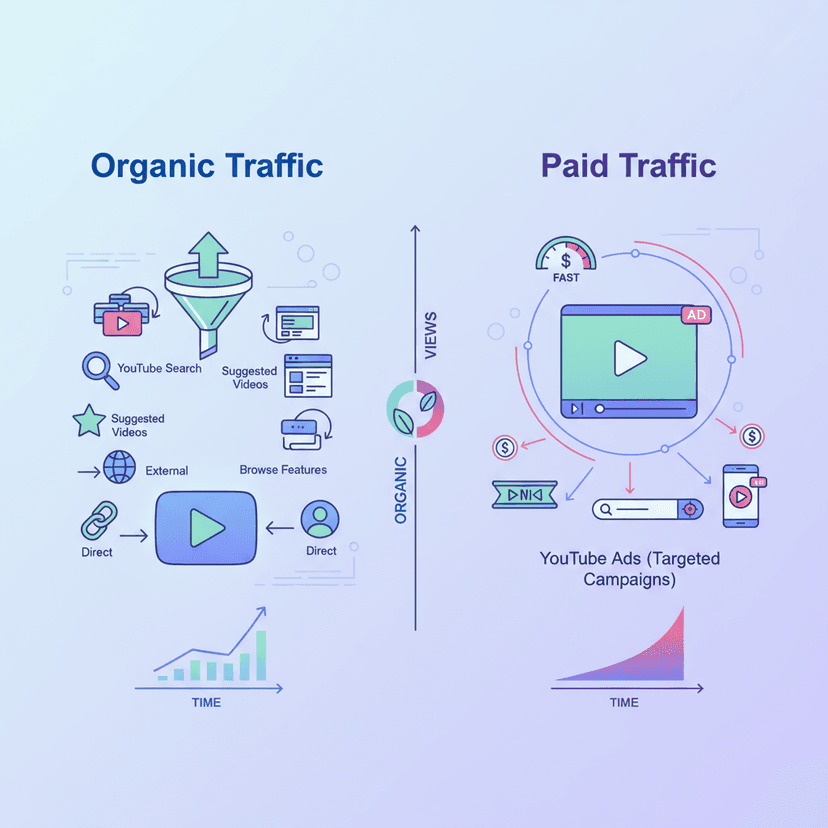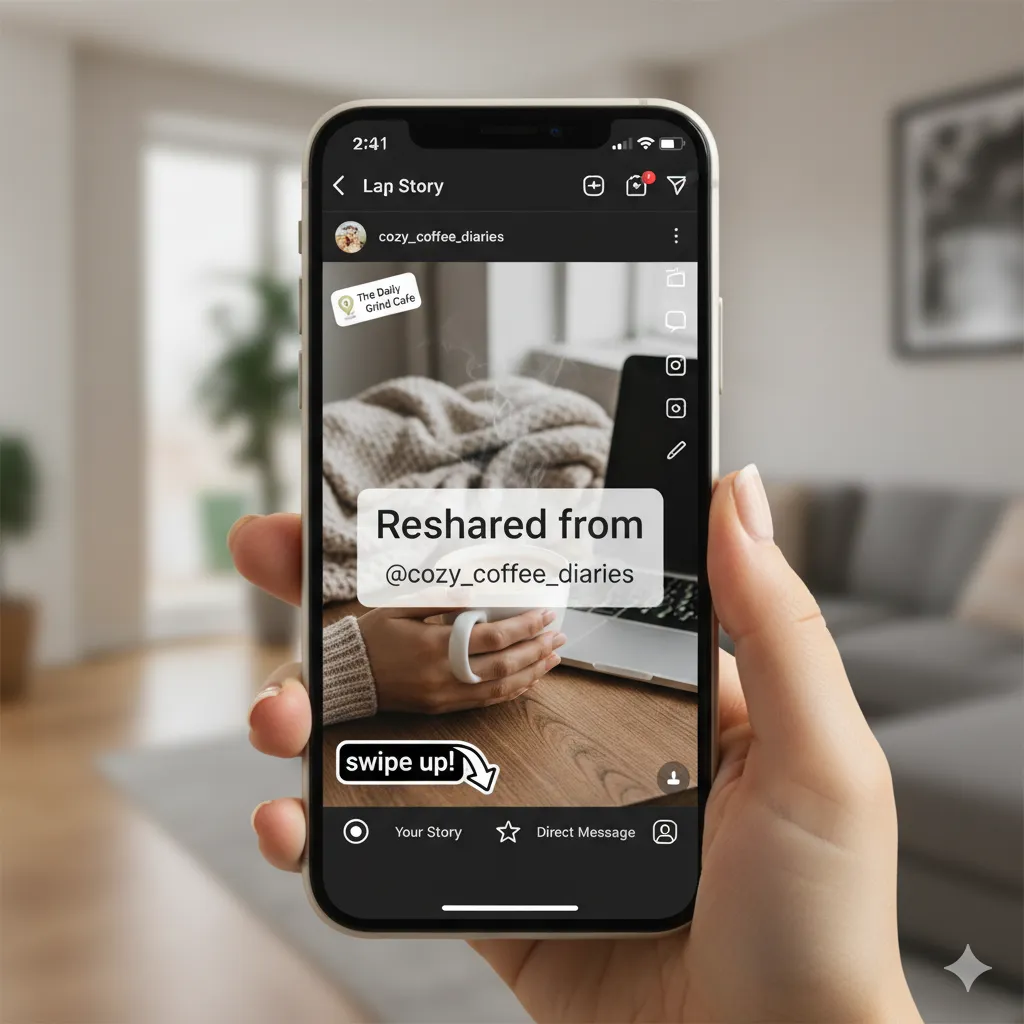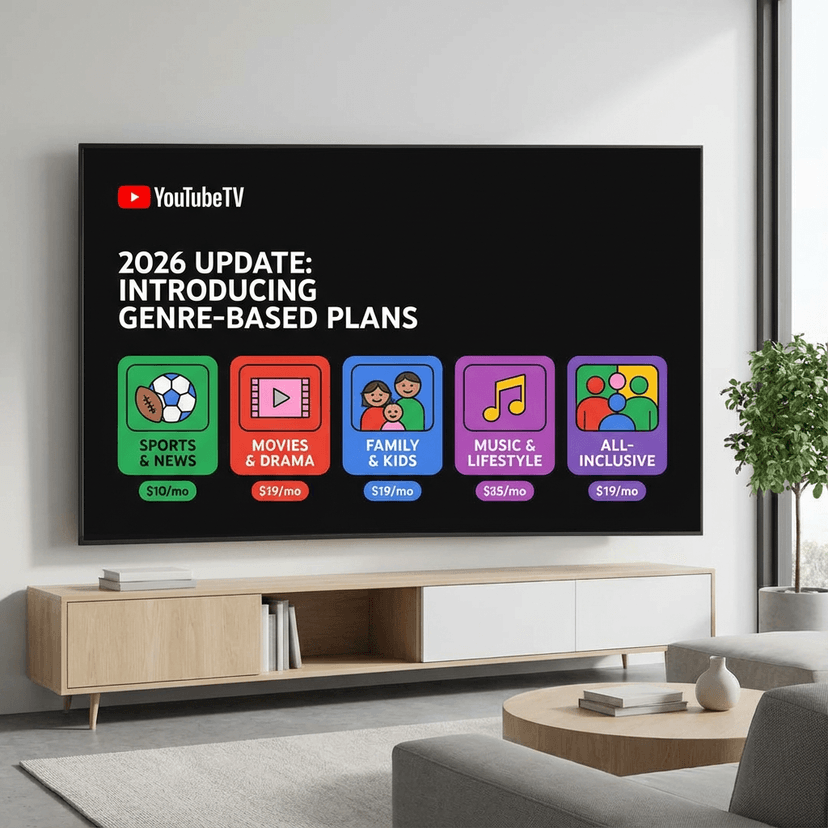In the competitive digital marketing landscape, running ads isn’t the challenge—making them deliver meaningful results is where most businesses struggle. If you’re facing high advertising costs with disappointing conversion rates, cross-platform remarketing might be the missing piece in your marketing puzzle. This powerful strategy allows brands to reconnect with potential customers across multiple platforms, significantly improving engagement rates and maximizing return on investment.
This comprehensive guide explores how to effectively leverage remarketing across Google Ads, Facebook, and Instagram to create high-performing campaigns that convert browsers into buyers. We’ll dive deep into platform-specific strategies, best practices, and optimization techniques that will transform your digital marketing efforts.
What Is Cross-Platform Remarketing?
Remarketing (sometimes called retargeting) is a digital advertising technique that allows you to show targeted ads to users who have previously visited your website or interacted with your brand. Cross-platform remarketing extends this concept across multiple platforms, creating a cohesive advertising experience regardless of where your potential customers are spending their time online.
Instead of treating each platform as a separate advertising channel, cross-platform remarketing takes a holistic approach, ensuring your messaging remains consistent while adapting to the unique characteristics of each platform.
Why Cross-Platform Remarketing Works
The customer journey is rarely linear in today’s digital landscape. Most users don’t convert on their first visit to your website. They browse, compare options, and sometimes forget about your brand entirely. Cross-platform remarketing addresses this challenge by keeping your brand visible as potential customers move between different online environments.
Here’s why this approach delivers exceptional results:
Increases Brand Recall and Recognition
When users encounter your brand across multiple platforms, it significantly reinforces brand awareness. Research shows that consumers need multiple touchpoints before making a purchasing decision. Cross-platform remarketing ensures your brand remains front and center throughout this decision-making process.
Dramatically Improves Conversion Rates
The statistics speak for themselves—retargeted visitors are 70% more likely to convert compared to first-time visitors. By maintaining visibility across platforms, you’re nurturing leads through the conversion funnel more effectively.
Reduces Wasted Ad Spend
Rather than continuously targeting cold audiences who may have no interest in your offerings, remarketing focuses your budget on users who have already demonstrated some level of interest in your products or services. This targeted approach delivers a much higher return on investment.
Creates a Seamless Customer Experience
When done correctly, cross-platform remarketing creates a cohesive journey for potential customers. They receive relevant, personalized ads based on their previous interactions, making them feel understood rather than randomly targeted.
Provides Valuable User Insights
As you implement cross-platform remarketing, you’ll gather rich data about how users interact with your brand across different touchpoints. These insights can inform your broader marketing strategy, product development, and customer experience improvements.
Google Ads Remarketing Strategies
Google’s display network reaches over 90% of internet users worldwide, making Google Ads an essential component of any remarketing strategy. Here’s how to maximize your results on this platform:
1. Implement Dynamic Remarketing for Personalization
Dynamic remarketing takes personalization to the next level by showing users the exact products or services they viewed on your website. This highly targeted approach creates an immediate sense of familiarity and relevance.
To implement dynamic remarketing effectively:
Businesses implementing dynamic remarketing typically see conversion rates 2-3 times higher than standard remarketing campaigns.
2. Create Strategic Audience Segments
Not all website visitors have the same level of interest or intent. Strategic segmentation allows you to deliver customized messages based on specific user behaviors:
Cart Abandoners: These high-intent users were just steps away from conversion. Create urgency with limited-time discount offers or free shipping incentives.
Product Viewers: These users showed interest but weren’t ready to commit. Highlight product benefits, showcase reviews, or present alternative options.
Past Customers: These users already trust your brand. Focus on cross-selling complementary products or encouraging repeat purchases with loyalty incentives.
Blog Readers: These users are in the information-gathering stage. Provide educational content that guides them toward conversion.
The more specific your audience segments, the more relevant your messaging can be.
3. Optimize Ad Creative and Copy
Even with perfect targeting, poor creative execution can derail your remarketing campaigns. Follow these best practices:
- Create visually appealing ads that align with your brand identity
- Craft compelling headlines that address specific pain points
- Include strong, action-oriented calls-to-action
- Test different messaging approaches (benefit-focused, problem-solution, testimonial-based)
- Ensure your landing pages deliver on the promises made in your ads
A/B testing different creative elements can increase click-through rates by 30% or more when you discover what resonates with your audience.
4. Implement Frequency Capping
While remarketing aims to keep your brand top-of-mind, bombarding users with too many ads can create a negative impression. Implement frequency caps to control how often individuals see your ads:
- Consider setting a cap of 3-5 impressions per day for most campaigns
- Adjust frequency caps based on the sales cycle length for your product
- Implement higher frequency caps for time-sensitive offers
- Lower frequency caps for longer consideration products to prevent ad fatigue
Finding the right balance ensures your remarketing remains effective without becoming intrusive.
Facebook Remarketing Tactics That Drive Results
With over 2.9 billion monthly active users and sophisticated targeting capabilities, Facebook remains one of the most powerful platforms for remarketing. Here’s how to leverage it effectively:
1. Build Strategic Custom Audiences
Facebook’s Custom Audiences feature allows for precise targeting based on previous interactions. Focus on these high-value segments:
Website Visitors: Create tiered segments based on recency (last 7 days, 14 days, 30 days) and engagement depth (homepage visitors vs. product page viewers).
Engagement-Based Audiences: Target users who have interacted with your Facebook content, such as video viewers, post engagers, or page visitors.
Customer List Matching: Upload your existing customer email list to create remarketing campaigns for cross-selling or reactivation.
App Activity: If you have a mobile app, target users based on specific in-app actions or inactivity periods.
Pro tip: Create exclusion audiences to prevent showing ads to recent purchasers or to remove users who have already converted on your current offer.
2. Leverage Lookalike Audiences for Expansion
Once you’ve established successful remarketing to your custom audiences, extend your reach through Lookalike Audiences:
- Create lookalikes based on your highest-value customer segments
- Test different lookalike audience sizes (1% is most similar to your seed audience, while 10% reaches more people but with less similarity)
- Combine lookalike audiences with additional targeting parameters for even better results
- Create multiple lookalike audiences based on different customer segments (high-value purchasers, frequent buyers, etc.)
This approach allows you to target new prospects who share characteristics with your existing customers, effectively expanding your remarketing strategy.
3. Implement Video-Based Remarketing
Video content typically generates higher engagement on Facebook, making it an excellent foundation for remarketing:
- Create remarketing lists based on video view duration (people who watched 25%, 50%, 75%, or 95% of your videos)
- Target users who watched your product videos with specific offers for those products
- Develop sequential video campaigns that tell a story across multiple ads
- Use video content for top-of-funnel awareness, then retarget engaged viewers with more conversion-focused ads
Users who engage with video content show 64% higher intent to purchase, making them valuable remarketing targets.
4. Test Multiple Ad Formats
Facebook offers various ad formats, each with unique advantages for remarketing:
Carousel Ads: Showcase multiple products or features in a single ad unit, ideal for retargeting product browsers.
Collection Ads: Create immersive shopping experiences with a cover image or video followed by product images.
Instant Experience: Deliver full-screen, interactive mobile experiences when users tap on your ad.
Dynamic Ads: Automatically show relevant products from your catalog based on user behavior.
Testing different formats allows you to identify which performs best for different segments of your remarketing audience.
Instagram Remarketing Strategies for Visual Impact
With over 1 billion monthly active users and high engagement rates, Instagram offers unique remarketing opportunities, especially for brands with strong visual assets. Here’s how to make the most of this platform:
1. Maximize Instagram Stories for Remarketing
Instagram Stories have become one of the platform’s most engaging features, with 500 million daily users. For remarketing, Stories offer distinct advantages:
- Create full-screen, immersive experiences that capture attention
- Leverage time-sensitive offers to create urgency
- Use interactive elements like polls and questions to re-engage past visitors
- Showcase product demonstrations or behind-the-scenes content
- Implement countdown stickers for limited-time promotions
Stories work particularly well for remarketing because they create a sense of exclusivity and FOMO (fear of missing out).
2. Incorporate Interactive Elements
Interactive ads generate 2x more conversions than static ads. For remarketing on Instagram, consider:
- Poll stickers to gather opinions on products users have viewed
- Quiz stickers to educate about product features
- Emoji sliders to gauge interest in specific offerings
- Questions stickers to address common objections or concerns
- Swipe-up links (for accounts with 10,000+ followers) that lead directly to product pages
These interactive elements not only increase engagement but also provide valuable insights about your remarketing audience.
3. Create Specialized Remarketing Segments
On Instagram, engagement takes many forms. Create remarketing segments based on:
Content Engagement: Target users who have liked, commented on, or saved your posts.
Profile Visitors: Reach people who viewed your profile but didn’t follow or take further action.
Video Viewers: Retarget users who watched your IGTV videos or Reels.
Shopping Interactions: Focus on users who clicked on product tags or viewed your Instagram Shop.
By tailoring your remarketing to specific Instagram behaviors, you’ll create more relevant experiences for potential customers.
4. Maintain Strong Visual Cohesion
Instagram is a visually-driven platform, so aesthetic consistency is crucial for effective remarketing:
- Develop a consistent visual style that users will recognize across posts
- Ensure remarketing ads match the look and feel of your organic content
- Use high-quality imagery that stands out in crowded feeds
- Incorporate branded elements without making ads look too commercial
- Consider the context of where your ads will appear (in-feed, Stories, Explore)
Visual cohesion helps build brand recognition and makes your remarketing efforts feel like a natural extension of the user’s Instagram experience rather than intrusive advertising.
Cross-Platform Remarketing Best Practices
While platform-specific tactics are important, the real power of remarketing comes from a coordinated cross-platform approach. Here are essential best practices to ensure your remarketing campaigns work together seamlessly:
Maintain Consistent Messaging While Adapting to Platform Strengths
Your core message should remain consistent across platforms, but the execution should take advantage of each platform’s unique characteristics:
- Use longer-form explanatory content on Google display ads
- Focus on emotional appeal and storytelling on Facebook
- Prioritize striking visuals and concise messaging on Instagram
- Ensure your brand voice remains recognizable regardless of platform
- Use similar color schemes, fonts, and visual elements across all platforms
This approach creates a cohesive experience while optimizing for the strengths of each channel.
Implement Proper Attribution Tracking
Without proper attribution, you can’t accurately measure the effectiveness of your cross-platform remarketing efforts:
- Use UTM parameters to track traffic sources and campaign performance
- Implement cross-device tracking to understand the complete customer journey
- Set up multi-touch attribution models rather than relying solely on last-click
- Use platform-specific tracking pixels on all relevant pages of your website
- Consider implementing third-party attribution tools for more comprehensive insights
Proper attribution helps you understand which platforms and messages are driving conversions, allowing for continuous optimization.
Conduct Rigorous A/B Testing Across Platforms
Testing is the foundation of remarketing optimization:
- Test different messaging approaches simultaneously across platforms
- Compare performance of similar audiences on different platforms
- Experiment with platform-specific features to determine impact
- Test frequency and timing variations to find optimal exposure levels
- Analyze how sequential messaging across platforms affects conversion rates
The insights gained from cross-platform testing can reveal patterns and preferences that wouldn’t be visible when looking at each platform in isolation.
Strategically Time Your Remarketing Sequences
Timing plays a crucial role in remarketing effectiveness:
- Implement immediate remarketing for abandoned carts (within 1-3 hours)
- Create multi-day sequences that gradually increase offer value
- Coordinate messaging across platforms to avoid overwhelming users
- Consider day-parting strategies based on when your audience is most responsive
- Adjust frequency based on the recency of website visits
Strategic timing ensures your remarketing messages reach users when they’re most receptive to re-engaging with your brand.
Focus on Incremental Gains Through Personalization
The most effective remarketing campaigns progressively increase personalization:
- Start with broader remarketing to recent site visitors
- Narrow targeting based on specific product interests as signals strengthen
- Incorporate dynamic elements that reflect browsing history
- Personalize offers based on previous engagement levels
- Adjust messaging tone and approach based on where users are in the buying journey
This progressive approach respects user privacy while delivering increasingly relevant experiences as more behavioral data becomes available.
Measuring Remarketing Success Across Platforms
To truly understand the impact of your cross-platform remarketing efforts, you need to look beyond basic metrics and analyze how the overall strategy is performing:
Key Performance Indicators for Remarketing
While standard metrics like click-through rate and conversion rate remain important, remarketing success should be measured by these additional KPIs:
-
Return on Ad Spend (ROAS): Especially important for remarketing since these campaigns should deliver higher returns than prospecting campaigns
-
View-Through Conversions: Measures users who saw your remarketing ads but converted through another channel
-
Audience Growth Rate: Tracks how quickly your remarketing audience pools are expanding
-
Frequency to Conversion: Identifies the optimal number of remarketing impressions needed before conversion
-
Cross-Platform Engagement: Measures how users interact with your brand across multiple platforms
-
Customer Lifetime Value of Remarketed Users: Compares the long-term value of customers acquired through remarketing versus other channels
-
Brand Lift Metrics: Measures improvements in brand awareness, recall, and perception resulting from remarketing exposure
These comprehensive metrics provide a more complete picture of remarketing effectiveness.
Attribution Challenges and Solutions
Cross-platform remarketing presents unique attribution challenges:
-
Challenge: Users may see ads on multiple platforms before converting
Solution: Implement multi-touch attribution models that give appropriate credit to each touchpoint -
Challenge: Remarketing often influences conversions that happen through direct traffic
Solution: Compare conversion rates between exposed and unexposed control groups -
Challenge: Different platforms have different measurement methodologies
Solution: Establish platform-agnostic conversion tracking through Google Analytics or dedicated attribution tools -
Challenge: Privacy changes are limiting cross-platform tracking
Solution: Focus on first-party data collection and implement server-side tracking where possible
Addressing these attribution challenges is essential for accurately measuring and optimizing your remarketing efforts.
Advanced Remarketing Techniques for 2023 and Beyond
As digital marketing evolves, remarketing strategies must adapt to changing technologies and user expectations:
First-Party Data Activation
With the gradual elimination of third-party cookies, first-party data becomes the cornerstone of effective remarketing:
- Build comprehensive customer profiles based on site behavior, purchase history, and direct interactions
- Implement email marketing integration with your remarketing strategy
- Use customer data platforms (CDPs) to unify data across touchpoints
- Create lookalike audiences based on first-party data signals
- Develop progressive profiling strategies to ethically gather more customer information
Organizations that successfully activate first-party data for remarketing can achieve up to 2.9 times higher revenue and 1.5 times greater cost savings compared to companies relying primarily on third-party data.
Sequential Remarketing Journeys
Rather than showing the same message repeatedly, sequential remarketing creates a progression:
- Start with brand awareness messaging for recent site visitors
- Move to product-specific information as users show continued interest
- Progress to special offers or incentives after multiple engagements
- Present testimonials and social proof to address potential objections
- Conclude with strong calls-to-action and urgency elements
This sequential approach mimics the natural sales process and addresses different concerns at each stage of the customer journey.
AI-Powered Optimization
Artificial intelligence is transforming remarketing by enabling:
- Predictive audience targeting based on likelihood to convert
- Dynamic creative optimization that automatically tests thousands of creative variations
- Personalized bidding strategies that adjust based on user value
- Cross-platform budget allocation that shifts spending to the most effective channels
- Automated insights that identify new remarketing opportunities
Brands leveraging AI for remarketing optimization typically see 30-40% improvements in campaign performance compared to manually optimized campaigns.
Common Remarketing Pitfalls and How to Avoid Them
Despite its effectiveness, remarketing comes with potential challenges that can undermine your results:
Privacy Concerns and Regulatory Compliance
As privacy regulations like GDPR and CCPA expand, remarketing practices must adapt:
- Always maintain transparent data collection and usage policies
- Implement proper consent mechanisms before deploying remarketing pixels
- Honor opt-out requests promptly across all platforms
- Stay current with platform-specific privacy policies and requirements
- Consider contextual remarketing alternatives that don’t rely on personal data
Proactive privacy compliance not only avoids potential penalties but also builds trust with your audience.
Ad Fatigue and Brand Perception Risks
Excessive remarketing can lead to negative brand associations:
- Implement frequency capping across platforms, not just within them
- Set exposure limits that consider the combined impressions across all channels
- Regularly refresh creative to prevent message fatigue
- Create suppression lists for users who have shown negative engagement
- Consider the emotional impact of persistent remarketing in sensitive categories
Balancing persistence with respect for the user experience is essential for long-term remarketing success.
Budget Misallocation Across Platforms
Without proper analysis, budget distribution can become inefficient:
- Regularly analyze cross-platform performance data to identify the most effective channels
- Consider the different roles each platform plays in the conversion path
- Adjust budgets based on both direct and assisted conversions
- Test budget shifts between platforms to find optimal allocation
- Develop platform-specific benchmarks rather than applying the same expectations universally
Strategic budget allocation ensures your remarketing investment generates the highest possible return.
Future of Cross-Platform Remarketing
The remarketing landscape continues to evolve rapidly. Here are the trends shaping its future:
Privacy-First Approaches
As third-party cookies disappear and privacy regulations tighten, remarketing will increasingly rely on:
- Contextual targeting that focuses on content affinity rather than user identity
- Cohort-based approaches that target groups with similar interests rather than individuals
- First-party data activation through direct relationships with customers
- Privacy-preserving technologies like federated learning and on-device processing
- Greater transparency and user control over remarketing experiences
Brands that adapt to these privacy-first approaches will maintain remarketing effectiveness while respecting user preferences.
Omnichannel Integration Beyond Digital Platforms
The next frontier of remarketing extends beyond digital channels:
- Connected TV remarketing that reaches users on streaming platforms
- In-store remarketing through mobile apps and location-based technologies
- Direct mail remarketing triggered by digital behaviors
- Voice assistant integration for remarketing on smart devices
- Digital out-of-home advertising that responds to online behaviors
This omnichannel approach creates a truly seamless remarketing experience that follows the customer regardless of context.
Predictive Remarketing
Rather than simply responding to past behaviors, predictive remarketing anticipates future needs:
- Identifying potential customers before they actively search for solutions
- Preemptively addressing objections before they arise
- Recognizing patterns that indicate readiness to purchase
- Customizing remarketing timing based on predicted buying cycles
- Adapting messaging to anticipated needs rather than just demonstrated interests
Predictive capabilities transform remarketing from a reactive to a proactive strategy, significantly improving effectiveness.
Conclusion: Crafting Your Cross-Platform Remarketing Strategy
Remarketing across multiple platforms offers tremendous potential for improving conversion rates while reducing overall advertising costs. By strategically reconnecting with potential customers as they navigate between Google, Facebook, Instagram, and other digital environments, you create multiple opportunities to move them closer to purchase.
The most successful remarketing strategies share several key characteristics:
- They’re rooted in deep understanding of the customer journey
- They leverage the unique strengths of each platform while maintaining message consistency
- They prioritize relevance and personalization over frequency
- They continuously evolve based on performance data and industry changes
- They respect user privacy while delivering value through targeted messaging
As you develop your cross-platform remarketing approach, remember that the goal isn’t just to follow users around the internet—it’s to provide genuinely helpful reminders and information that assist them in making purchase decisions. When remarketing delivers value rather than interruption, it transforms from a persistent sales tactic into a valued customer service.
The digital advertising landscape will continue to evolve, but the fundamental principle of remarketing remains constant: staying connected with interested prospects through relevant, timely messaging is one of the most efficient ways to drive conversions and maximize marketing ROI. By implementing the strategies outlined in this guide, you’ll be well-positioned to create remarketing campaigns that deliver exceptional results across all the platforms where your customers spend their time.
For businesses looking to refine their remarketing strategies further, exploring professional services like Remarketing can provide tailored expertise and advanced tools to elevate your campaigns.







